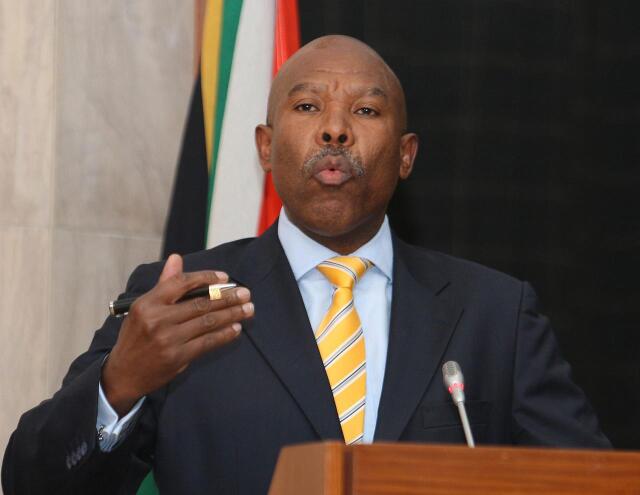This will be the 10th consecutive increase since the start of 2022.
SOUTH Africans will have to tighten their belts even further as discretionary spending will be affected as interest rates are tipped to reach their highest in 14 years this month.
Investors have priced in another 50 basis points hike by the South African Reserve Bank (SARB) as the Monetary Policy Committee (MPC) is set to announce its decision on Thursday.
This would be the 10th consecutive increase since the start of 2022, with South Africans seeing the repurchase rate (repo rate) rise from 3.75% at the start of January 2022.
This as headline consumer inflation for April is unlikely to fall within the SARB’s target range of 3% to 6% per annum in just one month after it remained sticky at 7.1% in March.
Consumer inflation has been above 6% since May 2022 and food inflation raced to a 14-year peak in March this year, coming in at 14%.
The latest Household Affordability Index shows that year-on-year the average cost of the household food basket increased by R481.02 (10,6%) – from R4,542.93 in April 2022 to R5,023.95 in April 2023.
EY Africa chief economist Angelika Goliger said on Tuesday that a 50 basis points point hike by the MPC was now a likely outcome after being a remote possibility a few weeks back.
“Two big pieces of news have increased the upside risks for the inflation outlook since the last MPC meeting, namely, the sharp weakening of the rand as a result of the foreign policy spat between South Africa and the US, and Eskom’s announcement that the country can expect heightened load shedding over the winter,” Goliger said.
“This all adds an upside risk to inflation in the coming months, something the MPC will be wanting to get ahead of through a higher repo rate.”
The rise in interest rates, rolling load shedding, increasing costs of petrol and food, among others, have put a strain on the disposable income of South African households.
If the MPC hikes rates by 50 basis points, the SARB’s benchmark lending rate will increase from 7.75% to 8.25%, which will also push up the prime lending rate from 11.25% to 11.75% per annum.
This would mean that interest rates would have reached their highest point since the 2008 global financial crisis, increasing debt payments while shrinking discretionary spend.
Old Mutual head of financial education John Manyike said that higher interest rates were making it more expensive for people to borrow money, and consumers were finding it harder to access credit as a result.
Manyike said the net salary increases, on the other hand, were not matching the inflation rate, which means people were becoming poorer and highly indebted.
“For example, a person who bought a house for R1 million over 20 years and paid a R100,000 deposit would have been paying R9,137 a month. With the latest rate increase, this would increase to R9,598 (or an extra R461) a month. This is enough to upset an income already balanced on a knife edge,” Manyike said.
“It’s time to take strict personal measures, amid signs of more interest rate hikes. The best you can do – especially if you already spend most of your salary repaying debts – is to formulate a budget and try to stop any wastage so you can focus on reducing debt and diversifying your income stream.”
The purchasing power of the rand has also been weakened to above the R19/$1 mark due to significant volatility in the exchange rate of the currency as well as a much weaker capital market.
There are now growing concerns that another steep repo rate hike will drive many more thousands of households in South Africa below the poverty line as stagflation bites.
Stagflation refers to a period of economic hardship characterised by stagnant economic growth, high unemployment and rising prices (inflation).
Debt Rescue CEO Niel Roets said the ongoing energy crisis could only lead to a further decline in living standards and a decrease in investment, which would further inhibit long-term economic growth.
Roets pointed to the deepening financial crisis of the country’s middle class that has resulted in 85,000 domestic workers losing their jobs at private households.
“While I understand that the MPC likely has no choice but to hike rates again to address inflation, the economic situation is simply not sustainable. Our country is looking at a humanitarian crisis of astronomic proportions,” he said.
“The pending rate hike will inevitably increase borrowing costs for consumers and reduce their disposable income even further, while pushing levels of debt even higher.”
– BUSINESS REPORT








